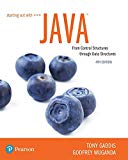
Concept explainers
In an inheritance relationship, this is the general class.
- a. subclass
- b. superclass
- c. slave class
- d. child class
The general class in the inheritance relationship is “superclass”.
Hence, the correct answer is option “B”.
Explanation of Solution
Superclass:
- The superclass is the base class or a parent class which is used to derive a new class.
- The methods, functions and variables in the subclass are not used by the superclass.
- The keyword “extends” is used to define a subclass that extends a superclass.
- The superclass is the base class for all the classes, so in inheritance relationship, this is the “general” class.
Explanation for incorrect options:
a. subclass:
The subclass is the derived class from superclass, which means the subclass contains more information when compared with the superclass.
Hence, the option “A” is wrong.
c. Slave class:
There is no class called as “Slave” class in Java.
Hence, the option “C” is wrong.
d. Child class:
The derived class is sometimes called as child class in java.
Hence, the option “D” is wrong.
Want to see more full solutions like this?
Chapter 10 Solutions
Starting Out with Java: From Control Structures through Data Structures (4th Edition) (What's New in Computer Science)
Additional Engineering Textbook Solutions
Starting Out with Python (4th Edition)
Starting Out With Visual Basic (8th Edition)
Java How to Program, Early Objects (11th Edition) (Deitel: How to Program)
INTERNATIONAL EDITION---Engineering Mechanics: Statics, 14th edition (SI unit)
Starting Out with Java: From Control Structures through Objects (7th Edition) (What's New in Computer Science)
- Programming Logic & Design ComprehensiveComputer ScienceISBN:9781337669405Author:FARRELLPublisher:Cengage
 EBK JAVA PROGRAMMINGComputer ScienceISBN:9781337671385Author:FARRELLPublisher:CENGAGE LEARNING - CONSIGNMENT
EBK JAVA PROGRAMMINGComputer ScienceISBN:9781337671385Author:FARRELLPublisher:CENGAGE LEARNING - CONSIGNMENT Microsoft Visual C#Computer ScienceISBN:9781337102100Author:Joyce, Farrell.Publisher:Cengage Learning,
Microsoft Visual C#Computer ScienceISBN:9781337102100Author:Joyce, Farrell.Publisher:Cengage Learning,  C++ for Engineers and ScientistsComputer ScienceISBN:9781133187844Author:Bronson, Gary J.Publisher:Course Technology Ptr
C++ for Engineers and ScientistsComputer ScienceISBN:9781133187844Author:Bronson, Gary J.Publisher:Course Technology Ptr C++ Programming: From Problem Analysis to Program...Computer ScienceISBN:9781337102087Author:D. S. MalikPublisher:Cengage Learning
C++ Programming: From Problem Analysis to Program...Computer ScienceISBN:9781337102087Author:D. S. MalikPublisher:Cengage Learning Systems ArchitectureComputer ScienceISBN:9781305080195Author:Stephen D. BurdPublisher:Cengage Learning
Systems ArchitectureComputer ScienceISBN:9781305080195Author:Stephen D. BurdPublisher:Cengage Learning





